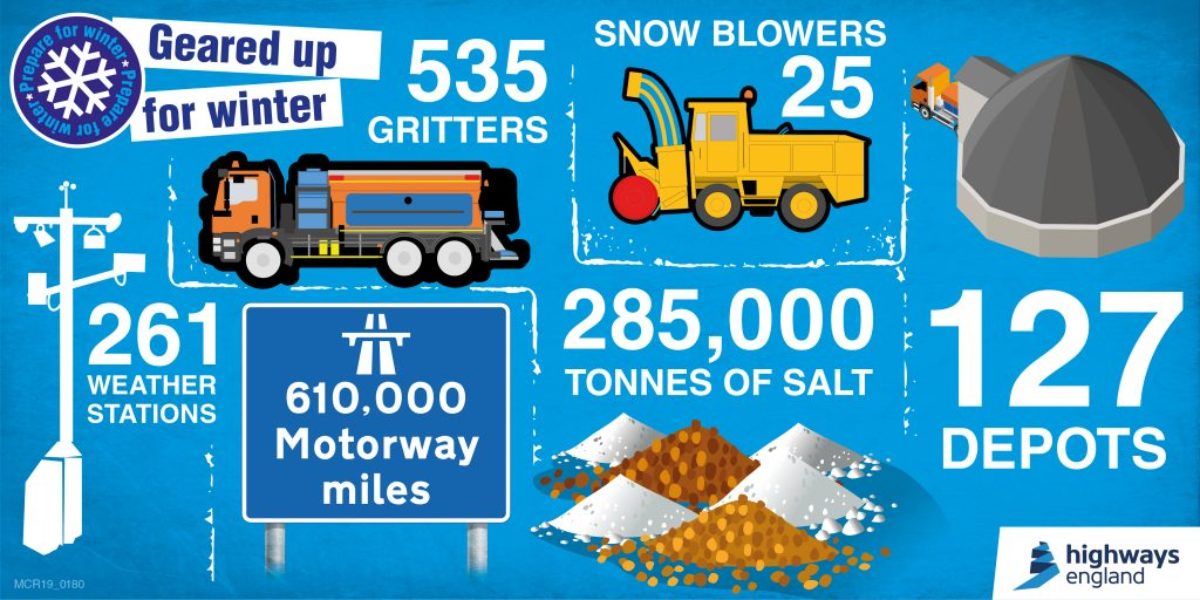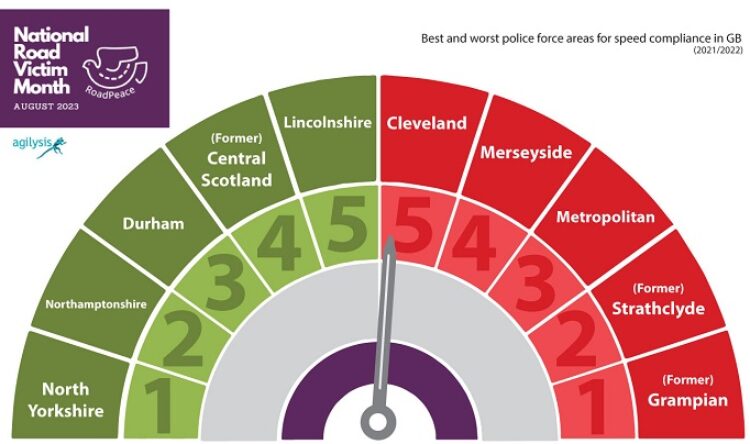A new level of weather forecasting for roads
Highways England extols the virtues of new technology to keep traffic moving whatever the weather
New roadside weather stations on five-metre-high poles are helping to keep England’s motorways and major A roads moving.
Over 250 weather stations are located across 4,400 miles of motorways and major A roads. These provide vital information to the Highways England teams. In turn, they help keep the strategic roads safe and reliable for drivers making essential journeys.
Live updates help maintenance teams decide when to send the fleet of 535 gritters out onto the network. There are 1,300 specially-trained gritter drivers ready to work around the clock when wintry weather is forecast. Meanwhile, overhead warning signs are ready to be utilised. These inform motorists of severe weather, gritting in progress or potential weather related issues on the roads.
The information and data also provide a much clearer understanding of the risks. Its not just the weather, but everything from surface water to high winds, and the disruption they can cause.
Sharing Information
Not only do the weather stations aid the work of Highways England, but they are also being utilised by the Met Office.
Abi Oakes, Senior Account Manager, Transport, at the Met Office, comments: “Good quality, reliable weather observations are the foundation of any forecast. They allow weather forecast models to reflect the on-the-ground situation, helping to give an accurate starting point for the forecasting process. They also allow us to verify our forecasts and to keep ahead of any changes.”
More than fifty key locations have had the new technology incorporated since 2015. Another twelve are having installations this winter, including the M6 at Shap in Cumbria – one of the highest points on the UK road network.
“We’ve been updating our weather stations with the latest technology to make sure the data we’re getting is as accurate as possible, and to help us make decisions which will keep the roads moving,” says Katy Little, Highways England’s winter services project manager.
Combined Technology
The weather stations use sensors mounted to metal poles at the side of the road to provide statistics on air temperature, precipitation, humidity, wind speed and visibility.
Meanwhile, sensors in the road surface and 30 centimetres underground provide temperature readings as well as accurately measuring the depth of water or snow on the carriageway. Two CCTV cameras provide live images of the road in both directions
Planning Ahead
The information from weather stations helps Highways England plan for all eventualities. This winter, with lower traffic levels experienced due to national lockdown restrictions, it means gritting services have had to be adapted. Gritting relies on traffic to make it effective, so additional amounts of salt are being used to achieve the same results.
Salt lowers the freezing point of moisture on the road surface. But dry salt has to draw in moisture to form a salt solution (or brine) to become really effective. To help accelerate this process, Highways England’s gritters often spread concentrated brine onto dry salt as it is spread. Traffic makes this more effective as it further crushes and spreads the salt.
The Forecast
With more potential heavy snow being forecast over the coming week, drivers are being advised to:
- Travel only if necessary
- Stick to the main roads
- Keep snow kits in your vehicle – ice scraper and de-icer, warm clothes and blankets etc
- Give a wide berth to gritters
Gritters usually travel at 40-50 mph in the middle lane when they are spreading salt on a three-lane motorway, treating the lane they are in and one lane on either side. On motorways with more than three lanes they can be found in lanes 1 2 or 3 when salting.
More information
Up-to-date travel and weather information is displayed on overhead signs and via local radio. Further information can be found by visiting the www.highwaysengland.co.uk/travel-updates or calling the Highways England Information Line on 0300 123 5000






